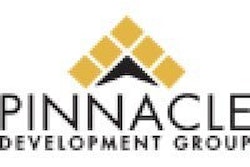Bob just completed a leader’s morning “huddle” before the rest of the crews got to work. He was sure each of his foremen was clear as to the changes during the day due to a combination of equipment problems, customer needs and a few workers vacancies due to illnesses and vacations. However, within 30 minutes of concluding the meeting Bob was receiving phone calls from his foremen, each asking Bob to repeat what he had said earlier.
This situation is not foreign to most contractors or senior leaders. Just when you thought you were crystal clear the very same people who minutes before stated they understood their instructions are either calling to get another dose of the same message or, worse yet, perform the wrong efforts thinking they understood the initial instructions or directions.
Getting all of your leaders on the same page requires more than just talking. Let’s take a few minutes and consider the specific efforts you can take to bring greater consistency and adherence to needed project requirements.
1. Gain focus and attention
This is so easy most of us simply don’t do it. Before you communicate with the people who need your message be sure to confirm they are focused and attentive. Too many meetings involve people who are distracted, having small talk with the person standing or sitting next to them, or working on something else. The increased use of smartphones and the like has become very common in many construction companies. While they are a great tool they should not be allowed on during a meeting.
Focusing your audience’s attention can be done simply by asking them to focus, waiting for eye contact, pausing occasionally after you speak to draw them back to you and even incorporating pauses in your own speaking when an individual is obviously not paying attention.
2. Ask for clarification
To ensure your audience is with you mentally, don’t be shy about asking someone to repeat what they thought they just heard. Having them repeat back to you will provide you with proof of what they thought they heard from what you thought you just communicated. How might you specifically ask an individual to repeat back to you what you just shared? Try the following question: “Jack, just to be sure that I’m communicating clearly, would you repeat to me what you think you heard me say?” You may be completely surprised at how they understood your comments.
3. Ask for verification
If it works in global politics it can work for leaders in the construction industry. When you are talking with your staff it is often a good idea to have them verify what you are saying. For example, you may have asked one of your workers to track the number of anchor bolts used during the previous day of work. Ask your worker to verify the number by sharing with you the exact amount they counted.
Whenever you have requested a subordinate to measure, monitor, track, etc. it is good to have the individual verify the request verbally. While he may have done his figuring with pen and paper, still have him communicate his efforts. This often invites greater attention and strengthens your worker’s ability to be on the same page with you.
4. Develop a four quarter strategy
Football coaches realize each quarter of a game is critical. Strategy in the first quarter might be different than strategy in the fourth quarter. Such differences are often the result of situations. It is no different in construction.
Look at your eight- to 10- hour work day as made up of four quarters. Therefore, you have four quarters of 90-120 minutes each. Make it a habit to touch base with those you most need to talk to at the beginning of each new quarter. This gives you a chance to review recent history (i.e. the last 90-120 minutes) and what needs to be addressed in the near future (i.e. the next 90-120 minutes).
Now, lest you think I’m joking, consider how fast instructions can go bad. If you can catch your people earlier rather than later in making wrong decisions or taking the wrong actions then you can raise your overall performance and productivity.
5. Document your game plan
There is simply no excuse for not documenting daily or weekly schedules and sharing this information with your staff. This effort can’t even be argued in light of all the data that supports the importance of scheduling and the number of training workshops that reinforce and teach proper scheduling. Such tools are the non-verbal communication tool that clarifies “what page you are on.” Still better is to work with your people to develop such schedules.
There are no magic pills to take when it comes to getting everyone on the same page. Many construction companies experience a great amount of wasted time and required rework. Much of it could be eliminated if everyone involved is focused, attentive, and clear about the direction and other information.




















